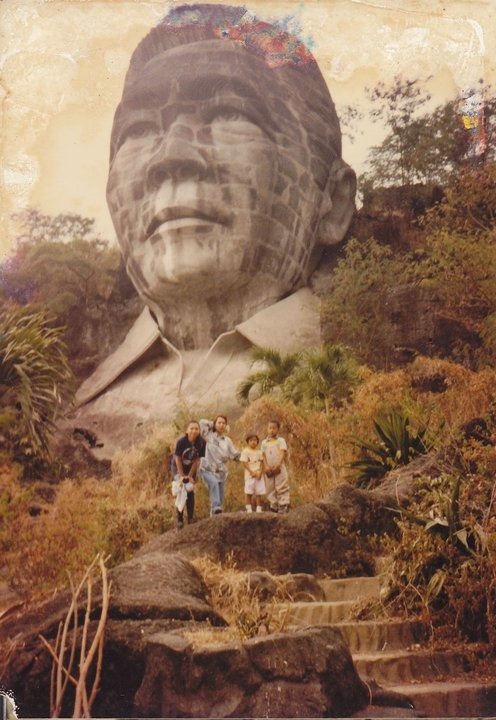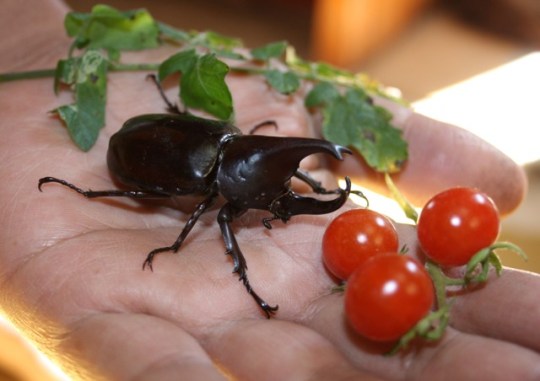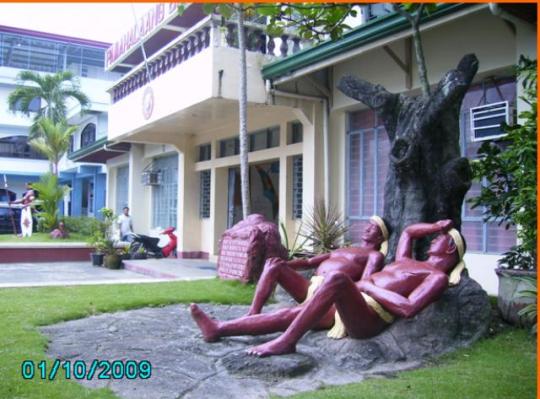Photo


I just recently learned from a fellow Isinay forester, Allan Gonzales, that the ala-Mount Rushmore bust of the late President Ferdinand E. Marcos in the hills between Pugo, La Union and Baguio City was the obra maestra of an Isinay sculptor/artist, Anselmo Day-ag, of Bambang, Nueva Vizcaya.
The bust used to be a tourist attraction along Marcos Highway in the 1980s but it soon crumbled after it was dynamited by people who didn't like the symbol of tyranny and bitter memories evoked by the image of the deposed president.
The self-taught Ansel Day-ag reportedly died in a vehicular accident in 1980 after putting the finishing touches to this monument. It's good that good photographs of his artistry have recently been made available thru the internet.
The photo with blue skies was taken from the free photo source
http://www.flickr.com/photos/angust/365108015/sizes/m/in/photostream/
while the one that shows the kids of the artist himself was taken from a Facebook account maintained by one of his children
http://www.facebook.com/pages/DAY-AG-Legacy/124482327597094?sk=info
0 notes
Photo

How do you call cat in Isinay?
Before letting the beetle in the photo fly to wherever it intended to go before I picked him up, I tried experimenting on how our cat Wew would react to it. This resulting picture should tell a lot. Now I just remembered that where I'm revolving now the cat is called a number of names. While both the Tagalogs and the Ilocanos call it "pusa" (note how close the word is to the English "pussy cat"), the Isinays have two names for it -- "kuting" by Dupax Isinay speakers and "mangaw" by those who speak Bambang Isinay. In the Bicol region it is called "iring" while in my wife's hometown Barlig, Mountain Province, it is called "amunin." In Tagalog, "kuting" refers to the kitten (again, please note the near similarity); whereas when my wife uses the term "amunin," my mind shifts to Isinay mode and conjures images of the civet cats (called "mutit" or "musang" in Ilocano) the meat of which used to be a common (that is, not exotic) source of protein for people in Dupax in the 1950s to the 1960s, be they Ilocano, Isinay, Ilongot, Igorot, Ifugao, Bicolano, Visayan, or American.
15 notes
·
View notes
Photo

This beetle used to be a favorite Isinay toy
I was sweeping fallen avocado leaves on our part of the road in Baguio City one morning last January when -- as if my guardian angel gave a sign that she was happy I was starting the day right -- I chanced upon this rhinoceros beetle. Called "dumoh" in Isinay ("barrairong" in Ilocano and "uwang" in Tagalog), it has been years, nay, decades, when I last saw this creature. It was my first time, too, to find one in cold Baguio. Right then and there half-forgotten boyhood memories of playing with the beetle (as well as cicadas, dragonflies, fireflies, crickets, and grasshoppers) raced like video tape on fast forward in my mind's eye. But before I called my daughters to come look at a sample of my toys as a boy in Isinay country, I plucked a twig of my wife's wild button tomato, put the sleepy insect on my palm, set them for a good photo op in the morning light, and this picture was one of the results. You must have heard how many of us Filipinos, particularly Ilocanos, eat almost anything that moves and are able to use as food any succulent green on the mountain trail (which was why during World War 2 American soldiers were said to have loved going with locals rather than their countrymen). Well, this beetle is not the one that could be fried and eaten with gusto. When I was growing up, however, the wild button tomato (called "butinggan" in Ilocano) was a common wild food plant among us Ilocano-Isinays in Northern Philippines.
4 notes
·
View notes
Text
Isinay for "Rainbow"
Among the first things that kids in Isinay land are taught are the names of certain objects that they get to see once in a while -- such as the rainbow. The Isinay name for it is "tabungeyon" ("bullalayaw" in Ilocano and "bahag-hari" in Tagalog). Children of modern-day Dupax, be they Isinay, Ilocano, or Tagalog, no longer use those words and instead refer to this celestial sight as "renbo." The teaching of a new word is almost always accompanied by precautions, stories, or other reminders that only doting parents can give to their children. In the case of the rainbow, we Isinay-Ilocano kids were cautioned from pointing to it. A case, one might say, of "look but don't touch" -- as if the rainbow were indeed a work of art meant only to be admired from a distance. And what if you point to it? "Your finger would either be cut off someday. Or go crooked. Or be twisted." Or so the warning goes. Of course, the more hard-headed among my playmates would defy our elders' warning. And after seeing that the brave guy's index finger remained intact, pretty soon the rest of us would cautiously follow his example. --CHARLZ CASTRO
0 notes
Photo

This photo (shot in front of the Town Hall of Dupax del Sur, Nueva Vizcaya, in the northern part of the Philippines) shows the supposed ancestors of Isinay land. I posted it here to represent the vantage point as well as general trajectory of this blog -- where the Isinays lived, what they lived on, what words they used, what tools they had, what trees they climbed, what birds they encountered, etc.
1 note
·
View note